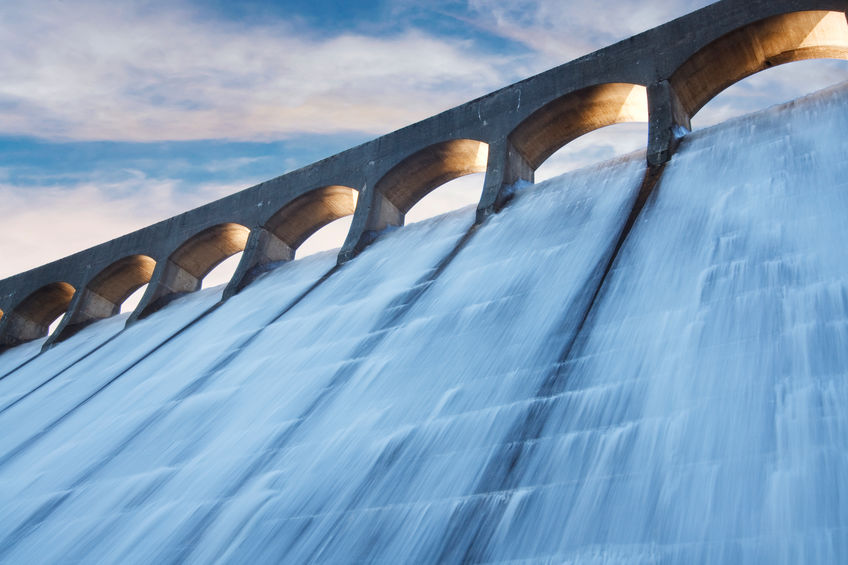The Australia-based ScienceAlert.com, in an article by publisher Carly Cassella, has a bright new idea. Since dams are bad anyway, why not knock all of them down (at least the ones that generate electricity), drain the reservoirs, and install solar panels in their stead.
Cassella admits that, at least for now, the ambitious idea is “just a thought experiment.” But not to worry. This new idea marries the hatred of dams in general (that has led to a growing dam removal movement) with the religious zeal of the ‘clean energy” movement.
But, you may say, hydro power IS clean energy. As recently as 2014, Energy Secretary Ernest Moniz touted an agency report encouraging new hydro projects. The report estimated that there are over 65 gigawatts (GW) of potential new hydropower development across more than three million U.S. rivers and streams – nearly equivalent to the current U.S. hydropower capacity.
According to Moniz at the time, “As the Energy Department works with industry, universities and state and local governments to advance innovative hydropower technologies, the resource assessment released today provides unparalleled insight into new hydropower opportunities throughout the country.”
How things change.
Today, Cassella, echoing a growing number of critics, asserts, “While it’s true that hydropower dams are a renewable source of energy, they still produce large amounts of greenhouse gases and can be environmentally destructive and costly to maintain in the long term.”
She claims that “only” 1.3 million acres of solar panels would be needed to generate as much electricity as we now get from hydropower (about 13 percent of total reservoir capacity). The rest of this reclaimed land could, she suggests, be used for wildlife habitat, recreation, and agriculture.
Yet these lakes and reservoirs are already used for wildlife habitat, recreation, and water for agriculture! [Some might also note that hydropower is 24/7 while solar and even wind are intermittent.]
Another new argument against dams comes from a recent Washington State University study which claims that methane makes up 80 percent of the emissions from water storage reservoirs created by dams – none of which is currently included in global greenhouse gas inventories.
But an earlier Brazilian study [in 2007 by the National Institute for Space Research, INPE], while noting that large dams release methane into the atmosphere, saw this as an opportunity to capture the methane [aka natural gas] for use in electricity generation. [Of course, California has banned new gas stoves and sees natural gas as just as evil as coal.]
The Federal Emergency Management Administration notes that the United States is second only to Canada as a producer of hydropower. America’s dams produce over 103,800 megawatts of renewable electricity and meet 8 to 12 percent of the Nation’s power needs – and, according to the National Hydropower Association, 52 percent of the nation’s renewable energy. FEMA states that “hydropower is considered clean because it does not contribute to global warming, air pollution, acid rain, or ozone depletion.”
FEMA also lists the many benefits other than electric power generation of dams – topping the list are the recreational benefits they provide for tens of millions of Americans. Boating, skiing, camping, picnic areas, and boat launch facilities are all supported by dams. Lake fishing is yet another related benefit.
The mammoth state of Texas is blessed with a single natural lake (Caddo Lake), yet 67 manmade lakes and reservoirs enabled over 2 million Texans and nonresidents to purchase fishing licenses in 2018, bringing that state nearly $60 million in revenues. [Texas is third behind California and Washington State in fishing licenses issued.]
Dams also protect homes, businesses, recreational areas, livestock, and wildlife from many of the devastating impacts of floods. They also provide water storage for feeding livestock, fighting fires, and more. About 10 percent of America’s croplands rely on steady flows of irrigation water thanks to dams.
There are concerns over dam construction, some of which are arguments for dam removal, while others indicate the need for proper management. Algal blooms, invasive plants, sedimentation, the needs of migrating species (like salmon), evaporation, and saltwater intrusion downstream all are well known concerns, but the larger concerns cannot be addressed unless entire cities are dismantled and the urban waste (concrete, steel, etc.) returned to the ground.
While Cassella cites deforestation, loss of biodiversity, substantial emissions, the displacement of thousands of people, and harms to nearby food and water quality as reasons to remove dams and drain lakes and reservoirs, most of these are actually arguments AGAINST dam removal.
But, as the title suggests, the best argument against dam removal is that this boat does not need rocking. Nor, for that matter, do we need to retrofit every U.S. building or submit to any other hare-brained ideas.
